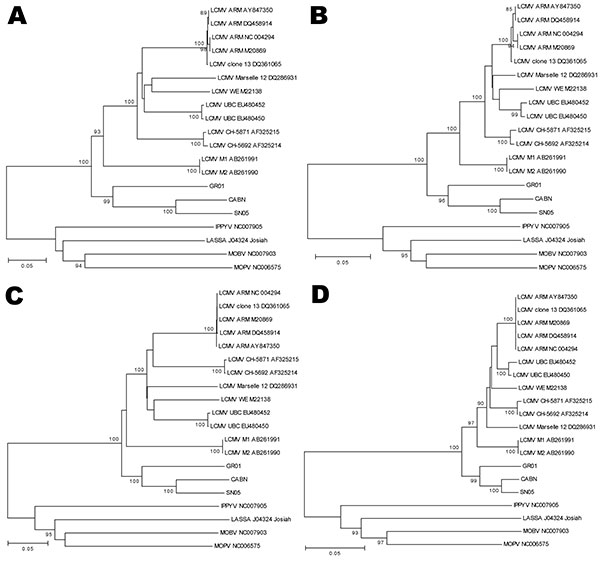Volume 15, Number 10—October 2009
Dispatch
Independent Lineage of Lymphocytic Choriomeningitis Virus in Wood Mice (Apodemus sylvaticus), Spain
Figure

Figure. Phylogeny of lymphocytic choriomeningitis virus (LCMV) strains and the viruses detected in this study based on the analysis of complete sequences of amino acids (aa) and nucleotides (nt) of glycoprotein (GPC) and nucleocapsid protein (NP) genes. A) GPC nt; B) GPC aa; C) NP nt; D) NP aa. Each sequence used shows the name of LCMV strain followed by GenBank accession number. Numbers indicate >80% bootstrap values. Scale bars indicate nucleotide substitutions per site. IPPIV, Ippy virus; LASV, Lassa virus; MOBV, Mobala virus; MOPV; Mopeia virus.
Page created: December 08, 2010
Page updated: December 08, 2010
Page reviewed: December 08, 2010
The conclusions, findings, and opinions expressed by authors contributing to this journal do not necessarily reflect the official position of the U.S. Department of Health and Human Services, the Public Health Service, the Centers for Disease Control and Prevention, or the authors' affiliated institutions. Use of trade names is for identification only and does not imply endorsement by any of the groups named above.